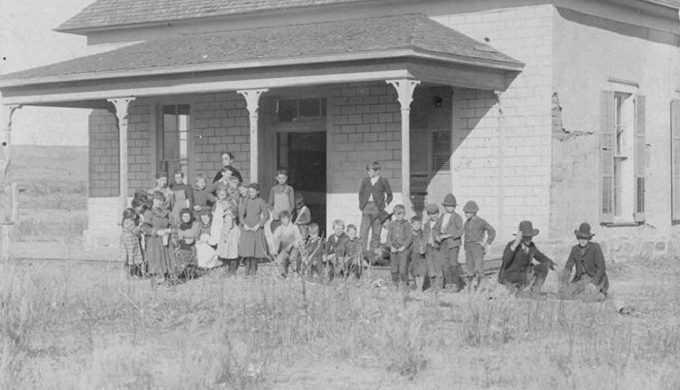Providing an easy crossing of the Canadian River back in the days of large cattle drives, the community of Old Tascosa was formerly known as the “Cowboy Capital of the Plains.” This Texas Panhandle community drew quite the assortment of characters from the frontier, good and bad alike, settlers, Native Americans, Mexicans, lawmen, and of course, outlaws. While the first permanent settlement was established by Mexican sheepherders in 1876, it was the arrival of Charles Goodnight and his masses of livestock that inspired a thriving populace. Old Tascosa rapidly grew into a rowdy boomtown of sorts, attracting entrepreneurs and outlaws alike.
History
Old Tascosa: One-Time Texas Boom Town, Long-Time Human Services Site

Photo: Facebook/Texas for Texans Via Charles Tankersley
With a lack of restraint and authority, conflicts were settled one-on-one, mostly through gunfights, resulting in a long list of bodies, many of whom were still wearing their boots. The consequence was the development of their own cemetery named “Boot Hill,” after the famous Dodge City, Kansas graveyard. Despite its notorious past, Boot Hill Cemetery today provides the perfect stop for heritage travelers and picnickers, all the same, offering a blend of Texas history, a colorful past, and a peaceful place to sit a spell.

Photo: Facebook/THE GOLDEN SPREAD HISTORY Via Johnny Duke
With the introduction of fencing, Old Tascosa’s success and prosperity was cut short. It was the early 1880s, and the speed of its decline would catch the community by surprise. Its courthouse, which was a newly built sandstone conglomeration in 1884, had once served 12 of the outlying communities, but by the late 1800s, the community was completely isolated from the rest of the world by all of the fencing that took place. At the same time, the railroad had arrived, laying tracks in miles either way. The citizens abandoned Old Tascosa and moved to the tracks, leaving the courthouse and the county seat to dissipate.

Photo: Facebook/Cal Farley’s Boys Ranch
By 1915, the fate of the county seat was sealed, reassigned to Vega thanks to county voters, and Old Tascosa subsequently became a ghost town. Falling into private hands, the townsite eventually became part of the extensive land holdings of Lee Blivins, Texas rancher. Blivins’ son Julian and his wife Berneta made the Old Tascosa Courthouse their home, and would later donate the entire townsite to the establishment of Cal Farley’s Boys Ranch in 1939. This child and family services organization, which is privately funded, operates to this day on the Old Tascosa townsite. Providing a place for young boys and girls alike who, (to quote Farley directly,) need “a shirttail to hang to”, the surrounding countryside provides space to learn and grow, while the restored courthouse is now home to the Julian Blivins Museum. Housing the history of Cal Farley’s Boys Ranch as well, the museum is home to various artifacts of Old Tascosa, the Texas Panhandle, and the cowboy culture of the wild frontier we’ve often read about in our history books.
Source:


